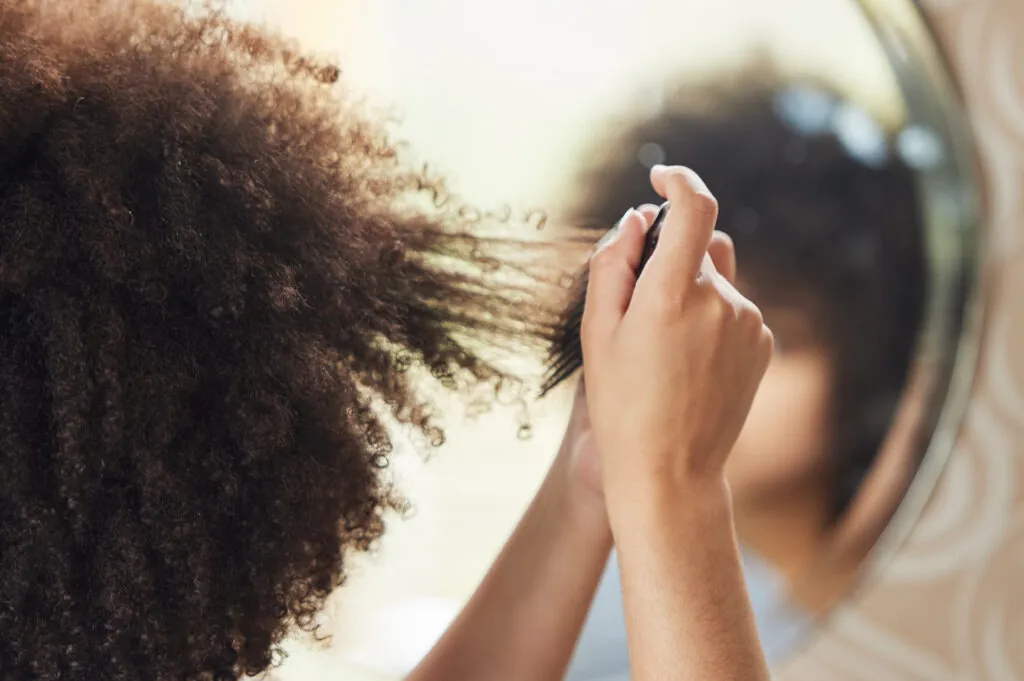Raleigh, NC: (919) 277-9299

Studies show that using hair relaxers made with formaldehyde, parabens, and phthalate chemicals are linked to higher rates of developing cancer.
Types of Relaxers Associated With Cancer
Cream- or lotion-based hydroxide relaxers with formaldehyde, phthalates, and parabens are linked to an increased risk of cancer. These products are sold for home and professional use in several strengths. Hydroxide ions are the relaxers’ active ingredients, but the compounds vary depending upon the brand. No-lye relaxers may include lithium hydroxide, potassium hydroxide, or guanidine hydroxide. Lye-based relaxers, or caustic sodas, contain sodium hydroxide.
While no-lye relaxers are marketed as ‘gentler,’ any type of hydroxide relaxer may include cancer-causing agents. Two common factors make certain types of relaxers dangerous: the inclusion of formaldehyde or endocrine-disrupting chemicals (EDCs), and the formula’s capacity to compromise the scalp with burns and lesions. This combination allows toxins to enter a woman’s bloodstream and cause adverse reactions that may include uterine, endometrial, or ovarian cancer.
Hair Straighteners With Endocrine Disruptors Chemicals (EDCs)
EDCs are often present in scent agents, like phthalates, and in paraben-based preservatives. Companies can list ‘fragrance’ or ‘scent’ instead of phthalate compounds, making these ingredients sound harmless.
Formaldehyde-Based Hair Straighteners
Relaxers with formaldehyde are not banned in the U.S. though the public anxiously awaits the FDA to take action.
Studies on formaldehyde began decades ago, so there’s no excuse for cosmetic brands to continue using harmful ingredients in hair relaxer preparations without warning consumers. Any woman who uses hair relaxers ought to be aware of the potential for formaldehyde exposure and to know that this chemical is classified as:
- Carcinogenic to humans by the International Agency for Research on Cancer (IARC)
- Known to be a human carcinogen according to the U.S. National Toxicology Program
- Carcinogenic to humans by inhalation route of exposure per a release by the Environmental Protection Agency (EPA)1
Most hair straighteners containing high levels of formaldehyde use the word ‘keratin’ on the product label and many of these were removed from the market due to Occupational Safety and Health Administration (OSHA) regulations for formaldehyde exposure. But hair care brands aren’t always truthful about the ingredients. In 2010, the National Institute for Occupational Safety and Health (NIOSH) discovered that a Brazilian Blowout Acai Professional Smoothing Solution contained 100 times the formaldehyde allowed by OSHA despite its ‘formaldehyde free’ labeling. The company was cited for the violation.
How To Know a Relaxer Is Safe
Women shouldn’t assume any hair relaxers are safe. These manufacturers know which of their hair relaxers are likely to cause cancer, but they won’t voluntarily pull profitable products from the market. You can read the ingredient labels to try to decipher unintelligible toxins, but it isn’t guaranteed you’ll understand the fine print or that manufacturers have correctly disclosed the contents.
Relaxers with formaldehyde or EDCs will remain on store shelves until these are banned in the U.S. or until women stop using these cosmetics. Those who develop uterine, ovarian, or endometrial cancer after a history of hair relaxer use don’t have to wait for industry regulations to take action. Share your story with our advocates and join the lawsuit against relaxer manufacturers to hold these companies accountable.
____________________
1 Source: National Cancer Institute, see ‘Can formaldehyde cause cancer?’ in Formaldehyde and Cancer Risk
